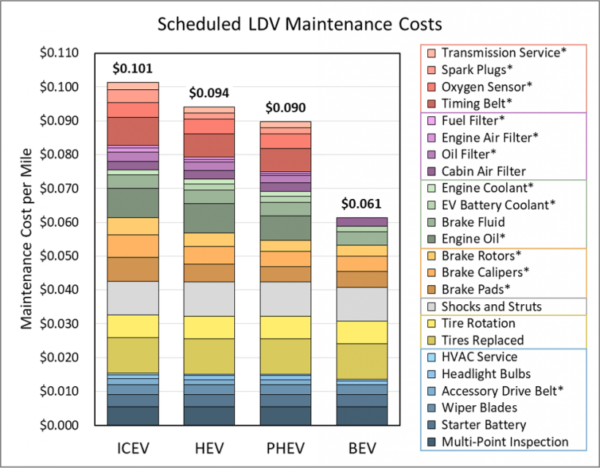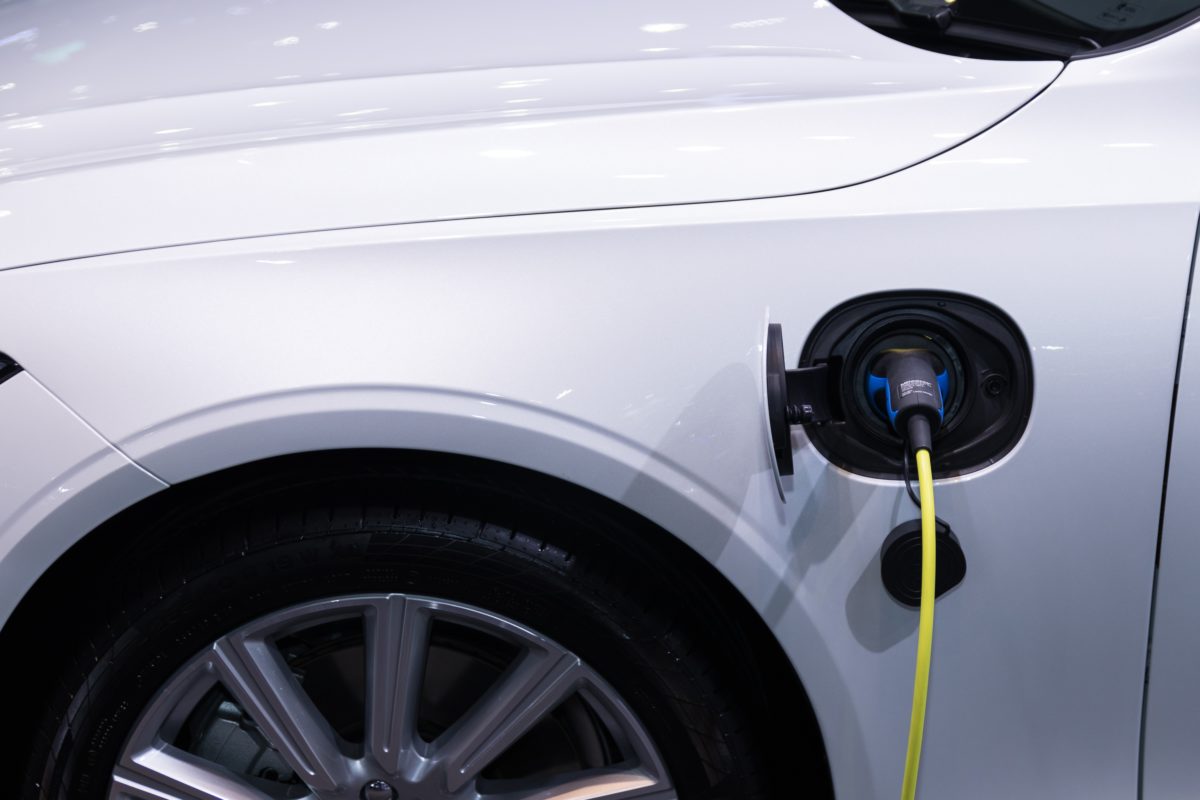A traditional gas-powered light-duty car costs about $1,260 a year to fuel, an EV lands at about $1,058 per year when a public charger is used. With home solar, EV owners can power their car for as little as $415 annually, according to a new consumer report run by SolarReviews.
Over a 25-year span, a typical warranty period for home solar, SolarReviews estimated that charging an EV with home solar could lead to average savings of $16,250.
The DOE also reports that scheduled maintenance for light-duty vehicles costs at about ten cents per mile, while battery electric vehicles only cost about six cents per mile to maintain.

A battery electric vehicle lacks engine oil, timing belts, oxygen sensors, spark plugs, and many more components and the maintenance costs associated with them. This means, over their lifetime, EV’s cost 40% less in scheduled maintenance costs than traditional gas-powered vehicles.
SolarReviews compared a gas-powered Hyundai Kona, and an all-electric Hyundai Kona, and found that in a 13,500-mile year, the gas-powered Kona would spend $1,260 on gas, while the EV charged at home would spend $662 per year in California, and as little as $450 per year in a state like Florida.
Plus, home solar energy is cheaper and greener than pulling your EV’s power from the grid. Grid-sourced energy can range from $.10 to $.40 per kWh, and averages about $.13 per kWh, while the levelized cost of energy for home solar across the country landed at $.11 per kWh, according to SolarReviews. Both of these options are significantly cheaper than a public charger, which ranges from $.28 to $.69 per kWh.
From a carbon standpoint, home solar performs the best as well, reported SolarReviews. Home solar has an implied emission of 368 lbs. of carbon dioxide per 3,780 kWh, while grid power and EV chargers stand at 1,531 lbs., and 450 gallons of gasoline (an equivalent to 3,780 kWh) would emit a whopping 8,830 lbs. of CO2.

Image: SolarReviews
Curiosity for EVs and their integration with home solar is on the rise, as SolarReviews reported a 1000% year over year increase in requests to estimate the solar requirements of charging a Tesla on their website. They suggest that an average of five additional solar panels would be sufficient for the average driver to meet the needs of a Tesla Model 3 charged on a level 2 charger.
“Home solar is the key to unlocking the most value from an EV investment, representing the cheapest charging method with the lowest carbon footprint when compared to public EV chargers, grid power and gasoline,” said Andy Sendy, Founder and President of SolarReviews. “Home solar is the clear solution for consumers looking to get the most out of their electric vehicles and realize consistent and sustainable cost savings.”
This content is protected by copyright and may not be reused. If you want to cooperate with us and would like to reuse some of our content, please contact: editors@pv-magazine.com.









By submitting this form you agree to pv magazine using your data for the purposes of publishing your comment.
Your personal data will only be disclosed or otherwise transmitted to third parties for the purposes of spam filtering or if this is necessary for technical maintenance of the website. Any other transfer to third parties will not take place unless this is justified on the basis of applicable data protection regulations or if pv magazine is legally obliged to do so.
You may revoke this consent at any time with effect for the future, in which case your personal data will be deleted immediately. Otherwise, your data will be deleted if pv magazine has processed your request or the purpose of data storage is fulfilled.
Further information on data privacy can be found in our Data Protection Policy.